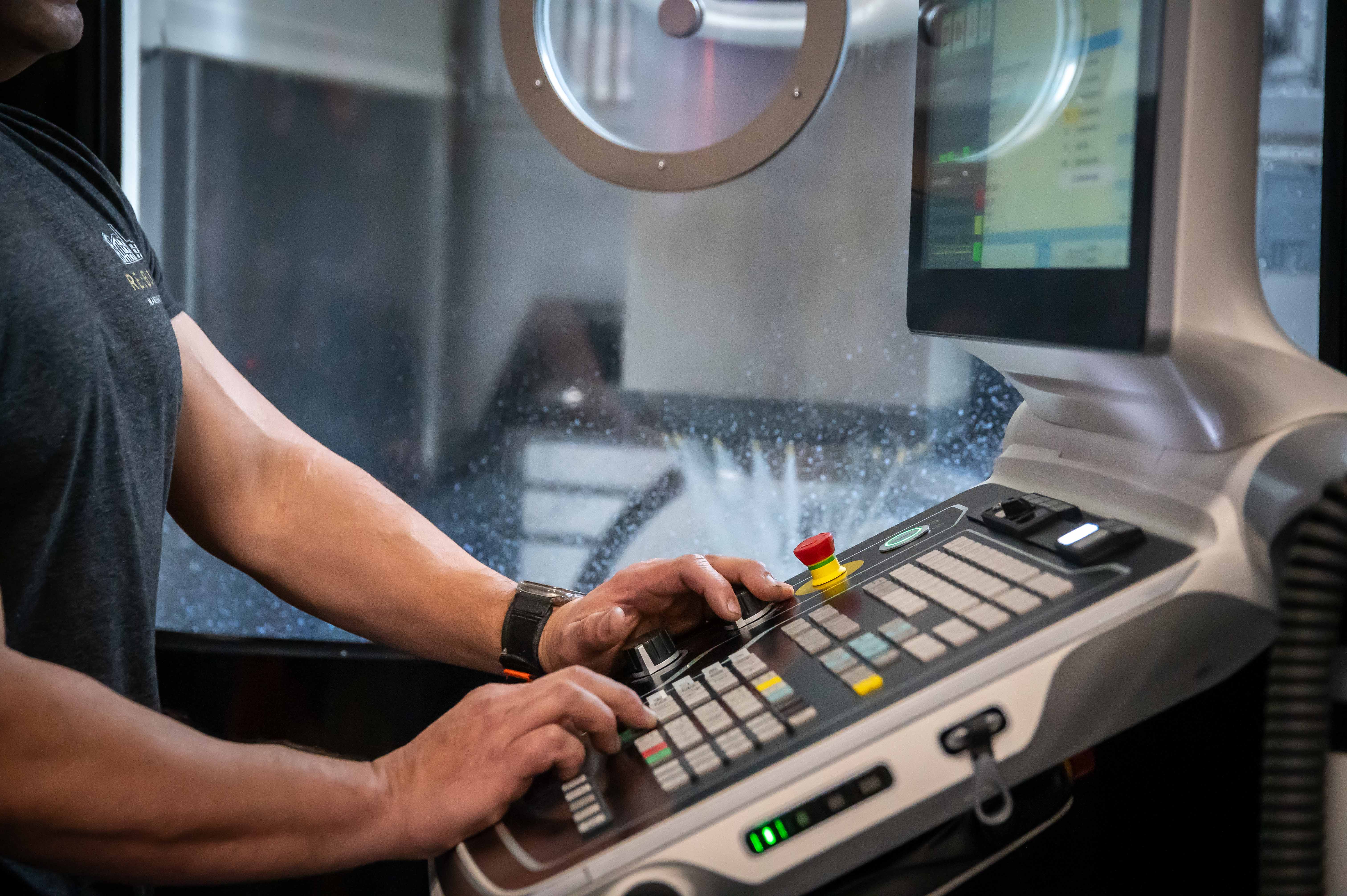June 10, 2024
The aerospace industry demands unparalleled precision and reliability in manufacturing. Aerospace CNC (Computer Numerical Control) machining has emerged as a critical technology to meet these exacting requirements. This precision manufacturing process ensures that aerospace components adhere to stringent safety and performance standards, making it an essential part of aircraft and spacecraft production.
Below we take a deeper look into the many facets and considerations for aerospace CNC machining and detail how Re:Build Cutting Dynamics is positioned to meet the most demanding requirements.
Unmatched value for critical needs: Connect with our team today to discuss your next aerospace manufacturing project.

Aerospace CNC machining utilizes computer-controlled machines to fabricate complex parts from various materials. The hallmark of this technology is its ability to produce highly precise components with exceptionally tight tolerances. In aerospace applications, CNC machining must comply with rigorous industry standards to guarantee the safety and functionality of components used in critical systems.
The versatility of aerospace CNC machining is evident in its range of processes. Let’s examine some of those processes in greater detail.
Definition: 2D contour milling involves cutting along a two-dimensional path, typically in the XY plane.
Applications: Used for creating flat profiles, slots, and pockets on the surface of a part.
Process: The cutting tool moves along a predefined path to remove material, creating the desired shape.
Advantages: Ideal for simple geometries and can be very efficient for parts that require precise flat surfaces or profiles.
Definition: 3-axis machining involves movement along the X, Y, and Z axes.
Applications: Suitable for parts that require more complex geometries than what 2D milling can achieve, such as pockets, holes, and curves.
Process: The cutting tool can move vertically (Z-axis) and horizontally (X and Y axes), allowing for more detailed work than 2D milling.
Advantages: Provides greater flexibility and precision, enabling the production of more intricate and detailed parts.
Definition: 4-axis machining adds rotational movement around the X-axis (A-axis) to the capabilities of 3-axis machining.
Applications: Used for parts that need machining on multiple sides without repositioning, such as complex curves and angled features.
Process: In addition to moving in X, Y, and Z directions, the cutting tool or the part itself can rotate, allowing for machining on different sides and angles.
Advantages: Increases efficiency by reducing the need for multiple setups and allows for the creation of more complex geometries.
Definition: 5-axis machining involves movement along the X, Y, and Z axes, with additional rotational movements around the X-axis (A-axis) and Y-axis (B-axis).
Applications: Essential for highly complex aerospace components that require intricate shapes, angles, and precision.
Process: The cutting tool can approach the part from virtually any direction, providing unparalleled flexibility and capability to machine complex surfaces and features.
Advantages: Enables the production of parts with extremely complex geometries, reduces the need for multiple setups, and increases accuracy by allowing for more direct and precise tool paths.
These capabilities enable the creation of intricate geometries and detailed features on a wide variety of components. Aerospace CNC machining typically works with high-performance materials. At Re:Build Cutting Dynamics, we have precision machining experience with the following materials:
These materials are often sourced in various forms, including bar stock, extrusions, castings, plate, and forgings to meet specific design requirements and optimize the manufacturing process.
The effectiveness of aerospace CNC machining relies heavily on state-of-the-art equipment and software. Modern CNC machines, integrated with advanced software like SolidWorks and MasterCAM, facilitate precise and efficient manufacturing processes. These technologies enable the creation of detailed CAD (Computer-Aided Design) models and the execution of complex machining tasks with high accuracy and repeatability.
Quality control is paramount for any CNC machining operation. In aerospace, the industry adheres to the AS9100 Quality System, which mandates comprehensive inspection processes to ensure every component meets required specifications. Advanced inspection techniques, including the use of CAD models for comparison, assist in maintaining the highest standards of precision and quality. This stringent quality control framework is essential for producing reliable aerospace parts that can withstand the rigors of flight and space travel.
Aerospace CNC machining is utilized in the production of a wide array of components, including:
The benefits of CNC machining in aerospace manufacturing are significant:
These advantages make CNC machining a preferred method for producing critical aerospace parts that require both complexity and accuracy.
Aerospace CNC machining plays a crucial role in modern precision manufacturing, delivering high-quality components that meet the demanding standards of the aerospace industry. Its capacity to produce intricate and reliable parts ensures the safety and performance of contemporary aircraft and spacecraft. For aerospace manufacturers seeking to enhance their production capabilities, CNC machining offers a robust and proven solution.
At Re:Build Cutting Dynamics, we’ve displayed an unwavering commitment to excellence in aerospace manufacturing for more than 30 years. As part of our comprehensive list of capabilities, our precision machining services ensure our partners receive parts that are not only of the highest quality but also precisely tailored to their specific needs — all backed by certifications critical in the aerospace industry.
Connect with our team today to learn more about the value we provide.
Our team at Re:Build Cutting Dynamics wants to ensure that all your questions regarding CNC machining have been answered. With that in mind, feel free to contact us today with any questions you may have, as we look forward to assisting you.
Re:Build Cutting Dynamics
980 Jaycox Road
Avon, OH 44011
Re:Build Cutting Dynamics is a component manufacturer specializing in precision machining, hydroforming, and hot-forming titanium for the aerospace industry. We produce high-quality metallic components that meet the requirements of aerospace applications.
All rights reserved Re:Build Manufacturing – Cutting Dynamics ©2024